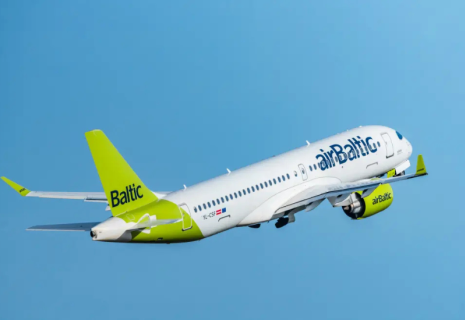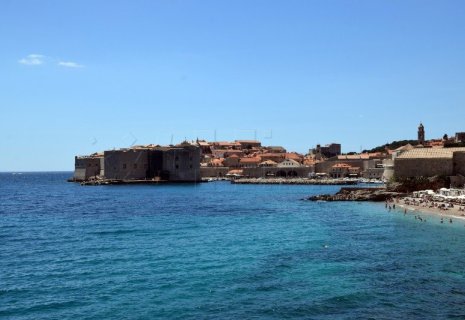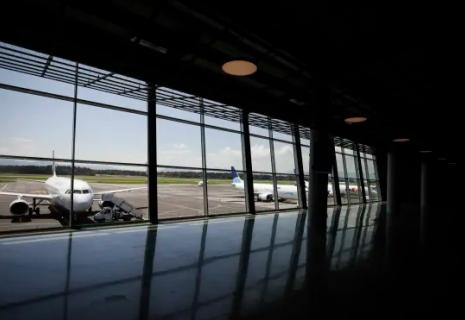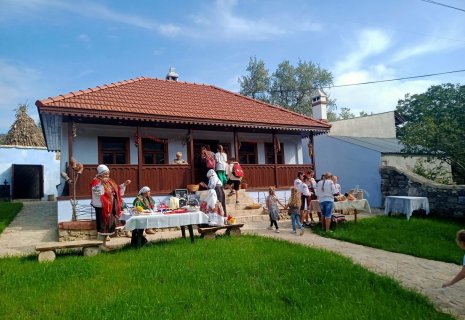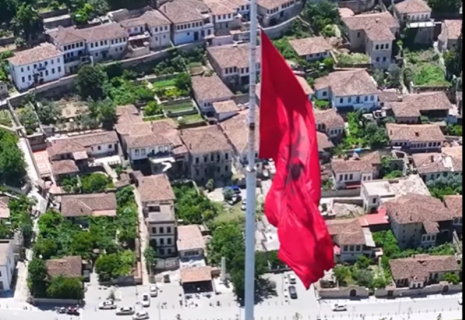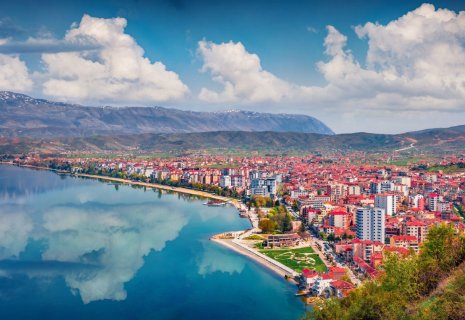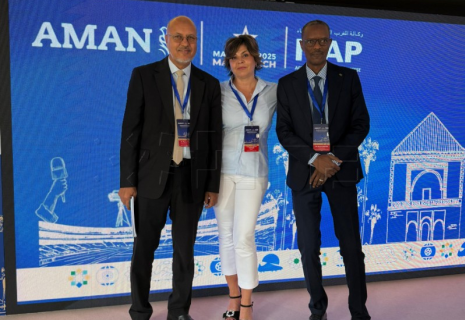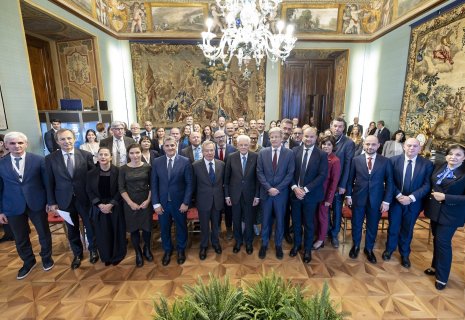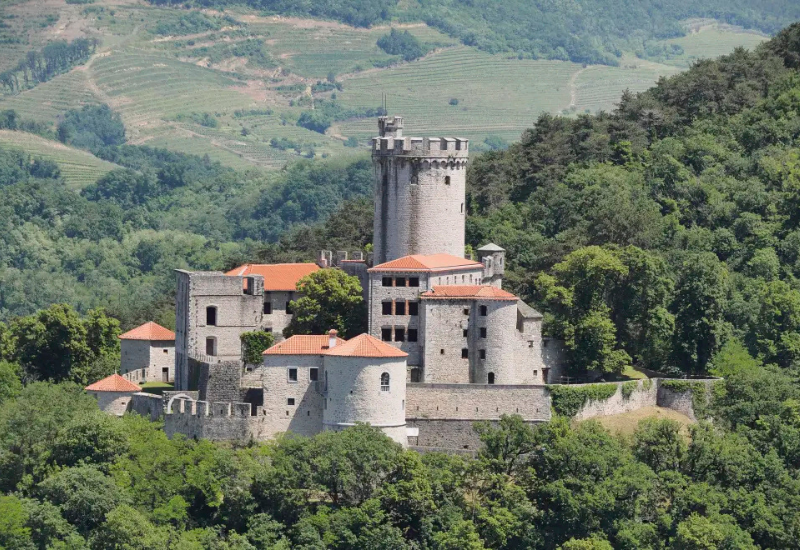
Slovenia’s tallest tower reopens to awe
Perched on an outcrop above the western village of Branik, Rihemberk is one of the oldest castles in Slovenia. Destroyed during the Second World War, it is being gradually restored to a semblance of former glory.
An imposing fortress surrounded by lush greenery, Rihemberk Castle stands out for its central tower, which affords superb views of the fertile Branica Valley bellow, of the hills and mountains all the way to the Italian border to the west, CE Report quotes The Slovenia Times.
While it may be off the beaten track today, it commands a strategic position between the broader Vipava Valley to the north and the Kras plateau to the south, between continental and Mediterranean Europe.
Medieval fortress
The castle was built in the late 12th or early 13th century by the von Riffenberchs, a noble family reportedly of Tyrolean origin, on the site of a prehistoric hillfort dating back to between 1600 and 900 BCE. The oldest written records of the castle are from 1230.
The Riffenberchs were one of the most important ministerial families of the Counts of Gorizia and were granted extensive fiefs in the Vipava Valley, the Gorizia region, Kras, Inner Carniola (today's Notranjska) and Bovec, Istria, Friuli and Carinthia (Koroška).
They built a fortified stone structure above today's Branik, complete with a pentagonal defensive wall. Soon after, the castle gained a massive defensive tower (bergfried) and a chapel dedicated to St Pancras, both of which can be seen today.
The castle would witness a turbulent history and changed hands many times. After the fall of the family that gave it its name, the property belonged to the counts of Gorizia and later the Venetians and the Habsburgs fought for it.
Elegant aristocratic home
In the early 16th century Archduke Ferdinand granted the estates of Rihemberk and Vipava to the noble Lanthieri family, who would retain ownership of the castle until the end of World War II. During the 17th century, the Lanthieris extensively remodelled the castle into an elegant aristocratic home.
The medieval castle adopted Baroque elements and later on took on a romantic neo-Gothic appearance. It was expanded outwards with new defensive structures and new buildings were added inside, including a grand hall and a library.
In the 19th century, the castle became a popular destination for distinguished guests - Empress Elisabeth of Austria, better known as Sisi, is said to have visited while staying in Miramare Castle near Trieste.
Ruins restored
Yet darker times loomed ahead. During the First World War the castle served as a military hospital for the Austro-Hungarian Army, which fought on the Isonzo Front not far from here. During the Second World War it was burnt down and mined by the Partisan resistance as it served as a post for the German-supported Home Guard.
The first repairs of the severely damaged structure started soon after the war when the area was still under the Allied command, but after the Primorska region was reunited with Slovenia the castle was nationalised and its renovation was paused until the 1960s.
After Slovenia gained independence the castle was declared a monument of national importance but kept falling into ruin until its ownership was transferred to the Nova Gorica municipality in 2013. Three years later extensive restoration began.
The castle partly reopened to the public in 2017, but has since seen many of its structures and elements restored, so the visitor can get an idea how the castle looked like in its heyday.
Relying on national and EU funding calls, the municipality is committed to continue the restoration in the future. The process has been conducted with great care because the site also serves as a key habitat for endangered animal species, including bats and the great crested newt.
Maternity ward for bats
Home to a dozen species of bats, the castle serves as a maternity hospital of sorts for these nocturnal animals, as a significant portion of the bat population of western Slovenia is born here.
The bats have also inspired a sound installation on show at the castle as part of the 2025 European Capital of Culture, a joint project of Nova Gorica and its Italian neighbour Gorizia that has helped spark interest in what has so far been an under-the-radar site.
More information about the flying mammals and the otherwise diverse fauna and flora of the area is available in the visitors centre above the main entrance to the castle. Visitors can also watch a video to learn more about the castle and its residents.
The highlight of any visit will likely be the 27-metre 13th century tower, arguably the tallest castle tower in the country. Its walls are about three metres thick at the base and they become thinner at the top, but are still sufficiently massive to hide a spiral staircase leading to the top platform.

